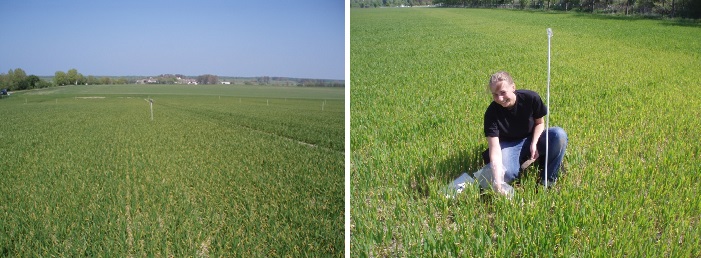Weed seed predation in organic and conventional cereal fields
BSc Tabea Sommer
Granivores can consume a large proportion of the newly produced weed seeds in crop fields each year. If substantial, granivores can help to exhaust the seed bank and thus contribute to long-term weed control. In N-Germany, however, annual seed losses tend to be smaller and granivore density lower than elsewhere. To investigate if high land-use intensity could be involved, seed predation rates were measured using Lolium multiflorum Lam. as a model seed in three organic and three conventional cereal fields, located close to each other. In addition, seed predation was measured at different distances from the field edge and exclosure cages were used to determine the relative contributions of vertebrates and invertebrates to seed consumption.
As expected for cereal crops, seed predation rates increased from early spring to early summer and then decreased again. Seed predation by invertebrates was comparable to that in other studies, but seed predation by vertebrates, mainly rodents, was much lower, suggesting that low seed predation rates in N-Germany may have been caused by lower mouse activity, concurring with low mouse density. Results with regard to the effect of distance to the field edge were variable and difficult to interpret. Observed responses may be linked to predator identity, with rodents foraging preferentially near field edges, and invertebrates away from field edges or indifferently. Farming system (organic vs. conventional) had little or no effect on seed predation rates.
Reasons for the low density of seed predators and low seed predation rates observed are unknown, but it is likely that some unidentified detrimental factor is involved in the organic fields or the impoverished landscape as a whole.
Daedlow D, Sommer T, Westerman PR (2012) Weed seed predation in organic and conventional cereal fields. Julius-Kühn-Archiv 434, 265-272.

